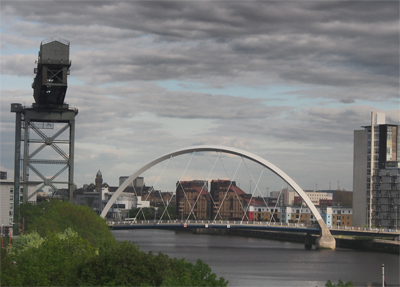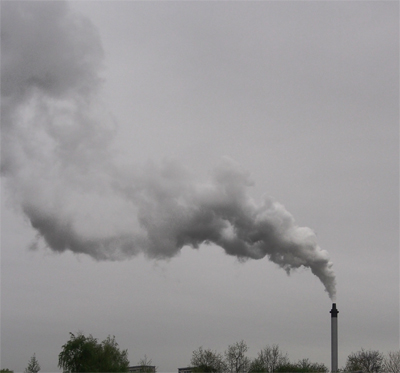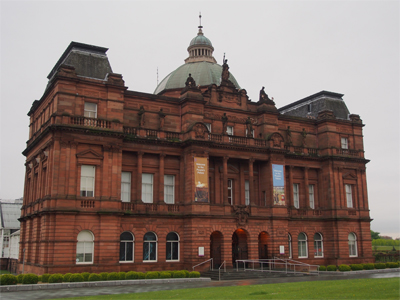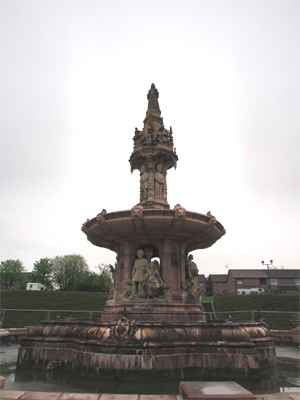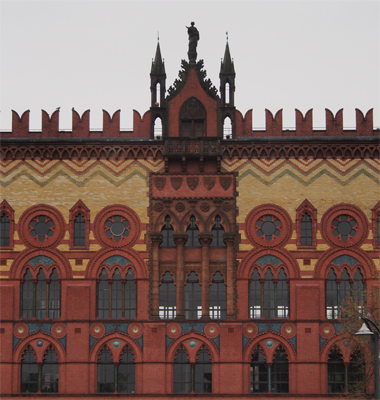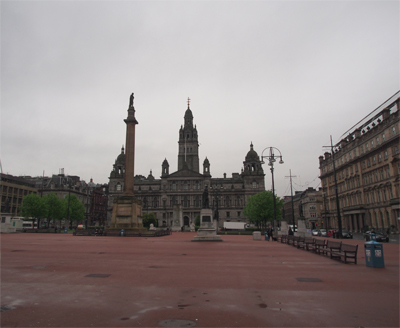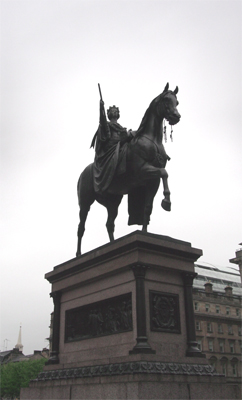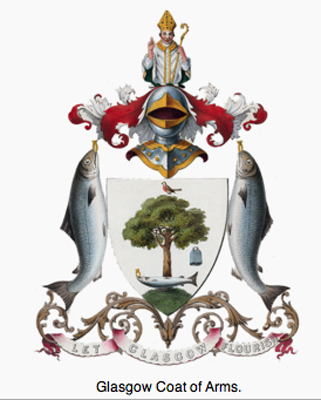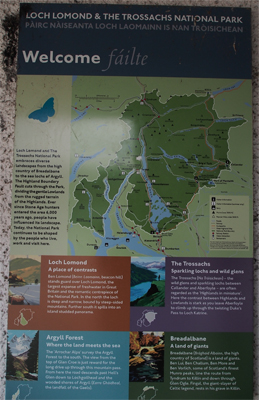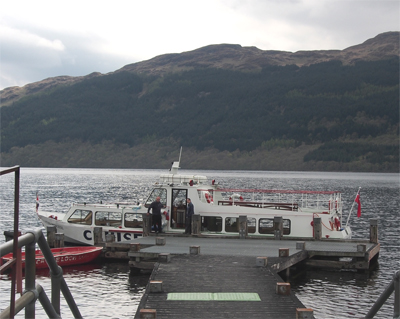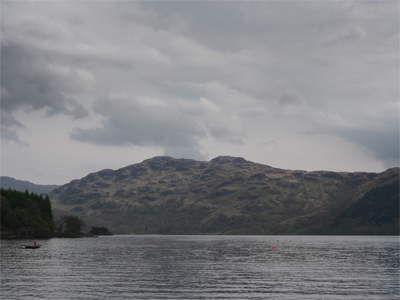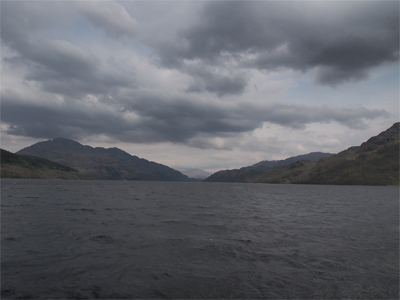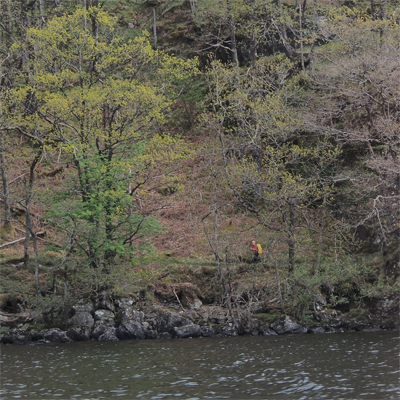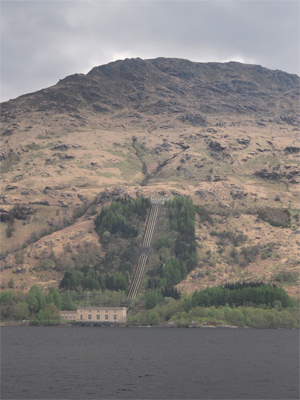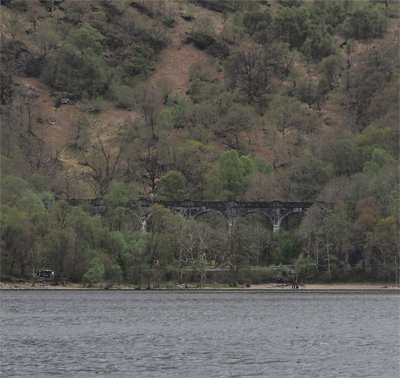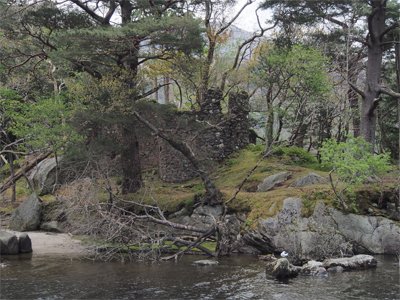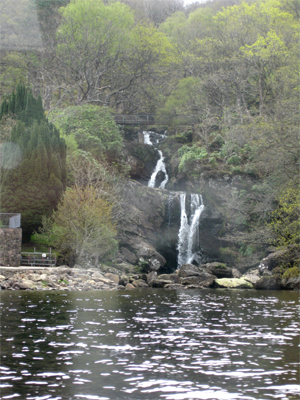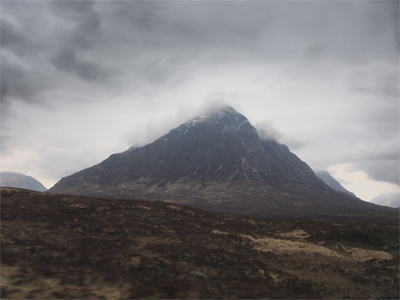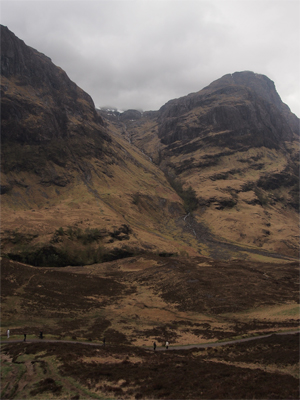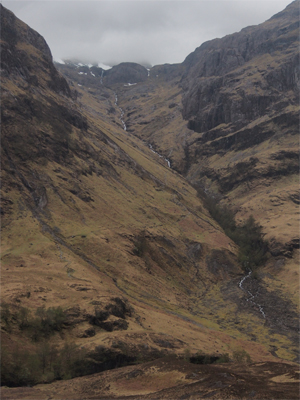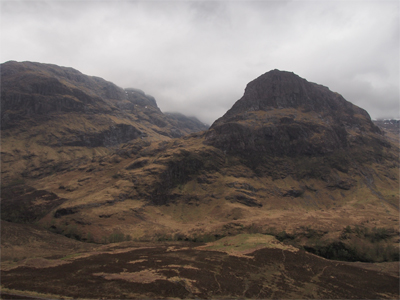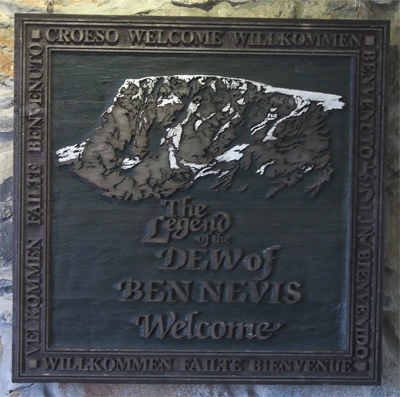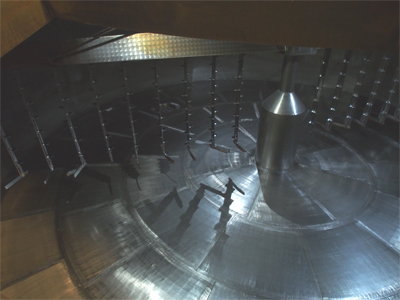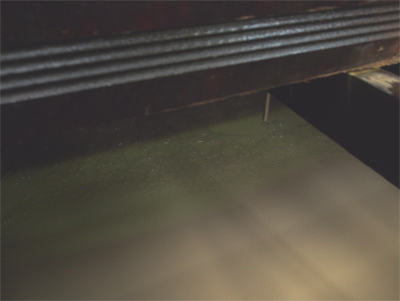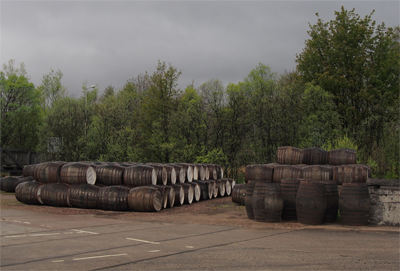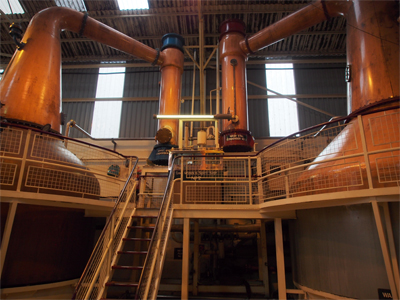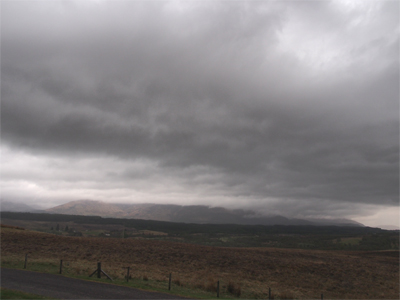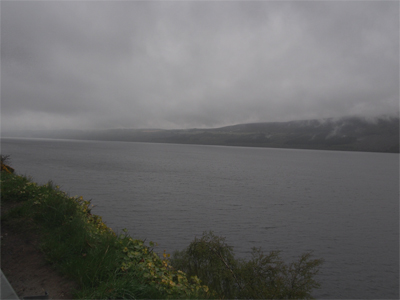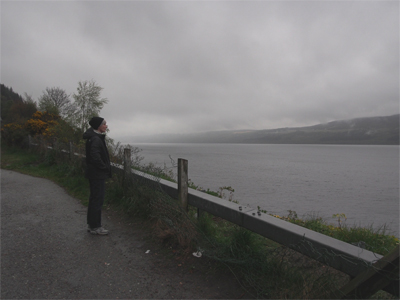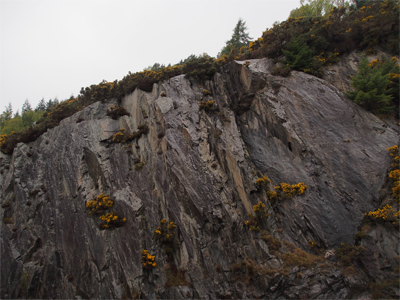Sat., 5/18/13 - Glasgow to Inverness
Glasgow means the green place in Scots Gaelic. We toured the city on the bus this morning. Glasgow was bombed to obliteration during WWII and has been rebuilt in grids. The new center city is mostly businesses - offices, finance, insurance, etc. As a result, it is a very multicultural city and everyone seems to get along.
On our way out of Glasgow we drove through the Gorbels area and stopped at Glasgow Green. It is a large city park. One elaborate wall of the old carpet mill where 118 women workers were killed in WWII bombings is left as a monument to those women. Across from it is the Peoples Palace - a place were homeless can sit and spend daylight hours. The monument of the Commonwealth has statues of Queen Victoria, at the top, and figures representing the British conquests.
We drove past the Tennet Brewery, which makes a popular Scotch ale. The beer is still delivered around town by horse drawn wagons.
Clyde Arch bridge
|
Plume of smoke from the Tennet Brewery
|
The Peoples' Palace |
Queen Victoria Fountain in Glasgow Green
|
Wall of the carpet factory
|
At George Square in downtown Glasgow, we got out to look at statues and monuments of all things British. Some of the statues were of Queen Victoria, James Watt, Prince Albert, Robert Peel (who established the first paid police force, hence the name Bobbies for British policemen), and Sir Walter Scott. The City Chambers (government) building is at one end of the square. The coat of arms of Glasgow is interesting. It has a salmon with a ring in its mouth (relates to a fable), a bush, a robin, and a bell. They all represent part of Scotland's history. A representation of the coat of arms is found on light posts in the city.
|
George Square - City Chambers in the distance |
Queen Victoria
|
|
Light post representation of the Coat of Arms
|
Outside of Glasgow we passed a part of the Antonine Wall, an 11-foot high Roman Wall which represents the northernmost frontier barrier of the Roman Empire.
|
|
|
Trossach Nat'l Park sign
|
Lomond Princess
|
Loch Lomond |
Loch Lomond |
Hikers along Loch Lomond
|
Electricity generating plant
|
Railroad bridge |
Inchconnachan Island in Loch Lomond
|
From Loch Lomond we drove north up to a mountain pass at 1,200 feet and entered the Highlands. The landscape here is a moor with peat bogs and heather but no trees.
|
Waterfall
|
Scottish Highlands |
Scottish Highlands |
Scottish Highlands
|
Scottish Highlands
|
Scottish Highlands |
Our next stop was at the Ben Nevis Distillery, founded in 1825. Ben Nevis is the highest mountain at 4,400 feet and is the source of the water for the whiskey. We got a tour of the distillery and learned about the process. They make a single malt whiskey. Malt is made from barley. A malt not labeled as single malt, is made from whiskey from several distilleries. A blended whiskey is a mix of a malt and whiskey made from grain like rye. Scotch whiskey is distilled twice and can be made in any country. Bourbon is distilled once and Irish whiskey is distilled three times. The alcohol content is controlled by how much water is added. In order to be called whiskey the brew must rest in an oak barrel for at least three years. The samples were ok.
|
|
Empty tank for mixing
|
Fermenting liquid in a tank - doesn't look too tasty |
Oak casks for aging |
Distilling tanks
|
Ben Nevis hidden in the clouds
|
We drove on to Inverness, which means the mouth of the Ness River, along Loch Ness and the Ness River. The lake is 22 miles long, one mile wide and 900 feet deep. The sides go deep sharply at the banks. We did not see the "Water Horse." Locals see her as a friend, not as a monster.
|
Loch Ness
|
Gale looking for "Nessie" |
Hillside
|
|
